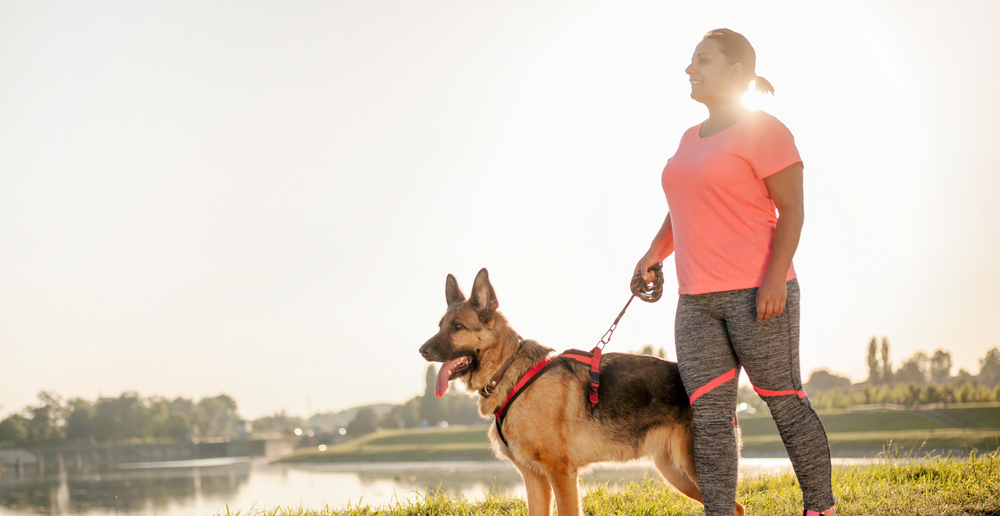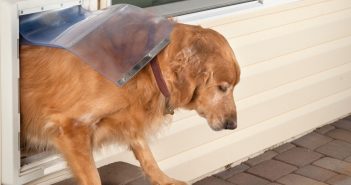One of the most common concerns and complaints German Shepherd owners have focuses on leash habits. German Shepherd Dogs (GSDs) are working dogs, which means they need a lot of exercise and stimulation. In addition to this, they are on the larger end of dog breeds, sometimes topping the scales at well over 100lbs (45.4kg). That being said, some GSDs might walk you instead of you walking them; in other words: they pull.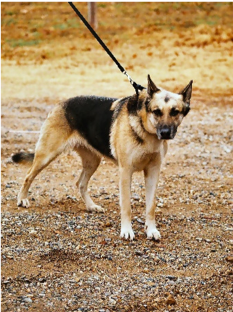
Years prior, a common sight would be a prong or choke chain collar for a pulling dog that is, clearly, uncomfortable when the dog pulls too hard. A no-pull harness for your German Shepherd is now one of the better alternatives. This harness has a clip for a leash, usually, at the front of the harness, on the chest. It may have several more clips, one between the shoulder blades or example, for different types of walking behaviors.
Switching to a No-Pull Harness
Even if your GSD is a puppy, you will have to get your dog used to a harness. Much like putting booties on their feet, dogs tend to feel like they need to remove the foreign object. Start with small increments of time with the harness on in the home, so when you graduate to using the harness for walks outside your dog won’t be distracted with trying to get the harness off.
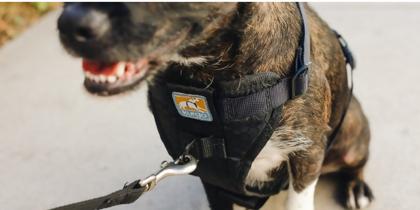 Keep in mind, you want to ensure the harness fits well and is neither too snug nor too tight. You should be able to slip your hand under any section of the harness easily, but not so loose that there are gaping spaces. Read the instructions for the harness and proper tightening techniques as well as doing a few “pull tests.” Try to remove the harness, without unbuckling it anywhere, and if it slips off with ease it is far too loose.
Keep in mind, you want to ensure the harness fits well and is neither too snug nor too tight. You should be able to slip your hand under any section of the harness easily, but not so loose that there are gaping spaces. Read the instructions for the harness and proper tightening techniques as well as doing a few “pull tests.” Try to remove the harness, without unbuckling it anywhere, and if it slips off with ease it is far too loose.
Once your dog is used to the no-pull harness and ignores its presence when it is on, it is time to go on some walks with your pup, using your harness in conjunction with the leash.
Starting Leash Training with a No-Pull Harness
Your GSD is a powerfully built critter. A lot of their muscle mass is in their legs and shoulders, which is why it is often very hard to control them on a lead. The no-pull harness, due to the design of having a clip on the chest area, will put the dog off balance when it pulls. For the first set of walks, try to take the dog to an area where there are minimal distractions such as other dogs, new smells, or people. A good example of this would be a backyard where the dog has been numerous times before. Always make sure to carry some treats or a toy and be ready to give verbal positive reinforcement!
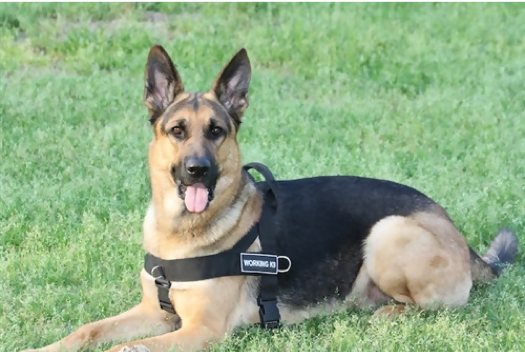 The first step is to build the structure. Leash the GSD inside and insist that you walk out of the door first, commanding the dog to “wait.” This will take some doing, especially if the dog is used to bolting outside, but it helps to remind the dog that you’re in control of their walk time.
The first step is to build the structure. Leash the GSD inside and insist that you walk out of the door first, commanding the dog to “wait.” This will take some doing, especially if the dog is used to bolting outside, but it helps to remind the dog that you’re in control of their walk time.
Yank the leash back a bit and either ask the dog to “sit/stay” or continue to say “wait.” Once you’re ready for your dog to come outside with you, say a command such as “let’s go” and guide the dog out with the leash.
On your walk, continually insist that the dog doesn’t pull. As soon as s/he starts to pull in one direction, say “no” or “easy” and then start walking in the opposite direction of where the dog is pulling. If your pup turns and walks with you, because the no-pull harness is going to guide them that way, immediately praise the dog and/or give a treat. You might feel a little odd walking back and forth to keep your dog from pulling, but eventually the displacement of their balance in the harness along with your positive reinforcement will get through to changing the dog’s behavior. Don’t forget to continually use keywords to indicate what your dog is doing correctly or incorrectly (e.g. “easy” for bad behavior and “good boy” for proper behavior).
Making Things a Bit Harder
Most walks are full of distractions: kids playing, other dogs, wild animals, and new smells are just a few examples. You want to make sure your dog knows that pulling is never acceptable on walks.
You can start with bringing a few distractions to where you’re already training your pup which is usually a backyard. Ask a neighbor or friend to bring their leashed dog into the yard with you and practice the same maneuvers detailed above, only with the other dog present. If that’s too much for your GSD, ask the other owner to give the dogs a 10-minute break and try again. If, after multiple attempts, there is little change to your dog’s pulling behavior, remove the other dog completely and try with just a human s/he would want to greet. You can also try tossing a treat or favorite toy ahead of you while stationary, and only allowing the dog to get closer to it if they don’t pull. Build back up to a dog being in the environment with you, but don’t be afraid to backtrack a few steps if your dog isn’t ready for that level of excitement.
Gradually add more distractions. Take the dog on a walk in a populated neighborhood, in a park, or on the outskirts of a dog park where multiple dogs are running and barking and playing. At this juncture you may want to also change the speed of your walks, switching from light jogs or running to walking and vice versa, insisting that your dog keep pace with you using the same positive reinforcement and changes in direction if your dog starts to pull.
Always be consistent with your praise and admonishment for behavior. This is key to successful training behavior. It may take months to reach a point where you can walk your dog without being pulled if the dog is particularly energetic, but stay patient and consistent and you’ll both get there eventually! Once they are pulling less and less keep up the praise since you don’t want your dog to revert to poor behavior. Remember, every so often change your pace to a jog or run and then back to walking to remind the dog that no matter what speed you’re traveling the option to pull is never on the table.
Switch it up a Little More
Say your dog is an expert no-pull German Shepherd now! Well, now you can train them to know when to pull and when not to pull. Although I would say there is never a time during a walk where pulling is acceptable, there might be a task outside of walks that you want them to accomplish that requires pulling. I am a huge supporter of weight pull for larger, working dog breeds. This requires a wagon or sled being pulled across a distance. It’s not only intellectually stimulating for these types of dogs, but physically demanding as well.
Since this task usually requires a harness similar to your no-pull walking harness, your dog might, at first, be confused about whether or not they’re allowed to pull, but the indication of the sled or wagon behind them will be enough, eventually, to indicate to the dog that there is a major difference in walking versus weight pull. You can train your dog to pull by hooking the dog up to the empty sled or wagon or, if your dog is hesitant about something following them as they walk, in just the harness by asking the dog to “wait” or “stay” and then you walk away and ask them to “come” while simultaneously saying “pull, pull, pull.” Once again, and especially since this requires you walking away, start your training in a fenced yard with minimal distractions.
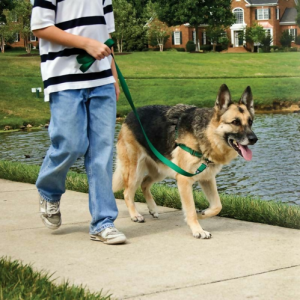 You can eventually get your dog to pull with just the command without them having to come to you, and then say “easy” to slow them down. Since they should already know the command “easy” from their previous training, you can create longer or shorter intervals of pulling and slowing down. You can use the tossed treat or toy technique to get the GSD to pull in a particular direction. Over time, you can add weight to the wagon or sled which makes it more difficult for the dog to move forward, adding good muscle development and strength. Make sure only to train your dog in weight pull after a year of age so you’re not damaging growing tissue in puppies, and never add a lot of weight all at once. Much like anything else, you must gradually make your way up to this condition.
You can eventually get your dog to pull with just the command without them having to come to you, and then say “easy” to slow them down. Since they should already know the command “easy” from their previous training, you can create longer or shorter intervals of pulling and slowing down. You can use the tossed treat or toy technique to get the GSD to pull in a particular direction. Over time, you can add weight to the wagon or sled which makes it more difficult for the dog to move forward, adding good muscle development and strength. Make sure only to train your dog in weight pull after a year of age so you’re not damaging growing tissue in puppies, and never add a lot of weight all at once. Much like anything else, you must gradually make your way up to this condition.
The most important factor in any training is consistency and safety. You must be consistent with your verbal commands, your body language, and your types of praise. Although we sometimes think our dogs understand what we are saying or doing, they oftentimes don’t if we use different words for the same thing, so it’s incredibly important to stay consistent.
Safety is imperative as well, for yourself and your dog and for others as well. Never put your dog in an unsafe situation (e.g. near heavy vehicular traffic, around aggressive dogs, etc.). Also, take it slow, and don’t be afraid to backtrack to less demanding forms of training to establish certain ground rules first. A little patience will pay off in the long run, and soon you’ll have a neatly trained no-pull harnessed German Shepherd!

